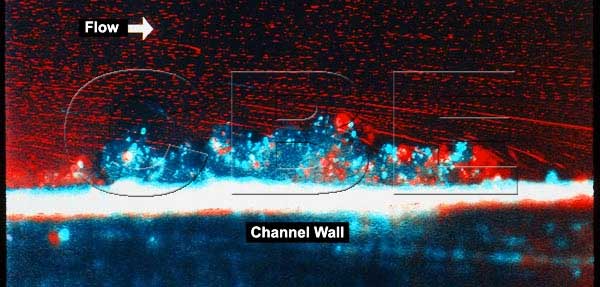Biofilm strategies: Nutrient transport

Sagittal view of biofilm, taken with confocal scanning laser microscopy, showing the flow of 0.2 micron diameter beads past, and into, the biofilm clusters. Nutrients, oxygen, sediment and other microbes can become entrained in a biofilm in this way. Courtesy, Paul Stoodley
Practical Implications
Biofouling of water distribution systems poses significant infrastructure and water quality problems. Numerous reactions take place in the pipes of a water system; thick biofilms may reduce flow, and will certainly harbor contaminants and promote corrosion. Since biofilm formation is all but ubiquitous in distribution systems, one avenue of development is to design a biological unit process for removing organic matter upstream of sensitive clean water components. This kind of biological pretreatment reduces the organic material that serves as nutrient and so limits biofilm growth.
Movie: Fluid transport of beads through biofilm channels

